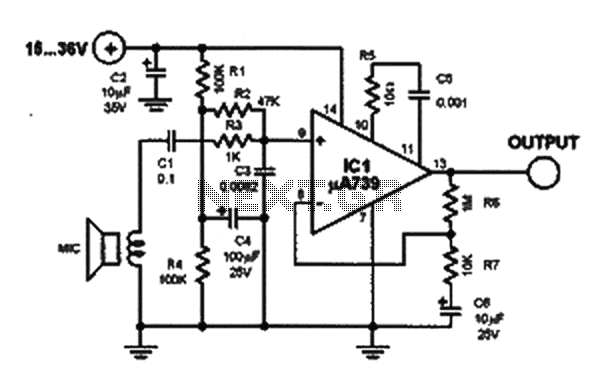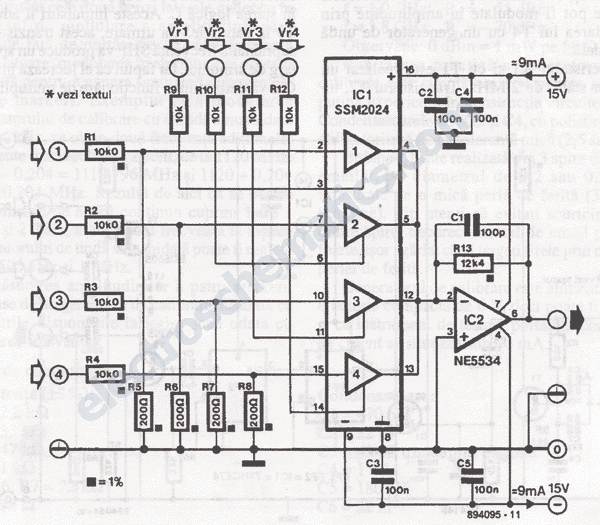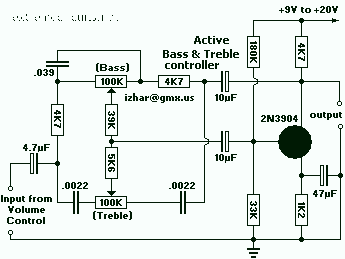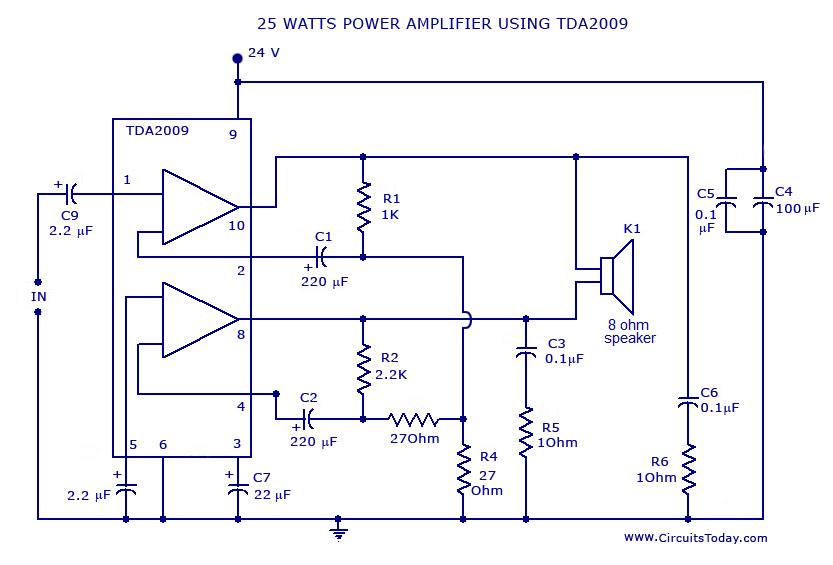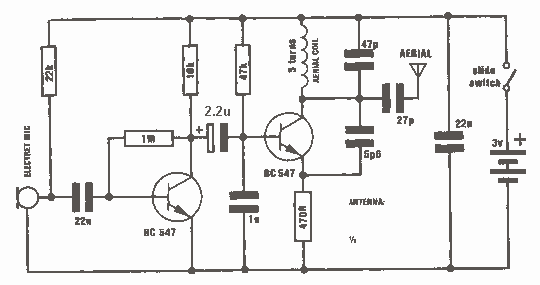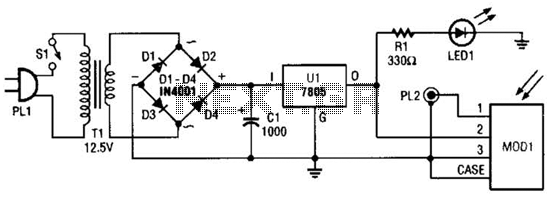
Parametric EQ based bass boost circuit

A circuit was required to function as a bass boost. The design was adapted from a circuit by ESP Sound, focusing solely on the frequency range of 35-150 Hz.
The bass boost circuit, as adapted from the original design, primarily enhances low-frequency audio signals within the specified range of 35 Hz to 150 Hz. This frequency range is crucial for achieving a deeper and richer bass response in audio applications, making it particularly suitable for subwoofers and bass-heavy audio systems.
The circuit typically employs an operational amplifier (op-amp) configured for a non-inverting gain stage. The input signal is fed into the non-inverting terminal of the op-amp, while a feedback network determines the gain and frequency response. The frequency response is shaped by the selection of resistors and capacitors in the feedback loop, allowing for a boost in the desired frequency range while attenuating higher frequencies.
In practical implementation, the circuit may include a potentiometer to adjust the level of bass boost, providing flexibility for the user to tailor the output to their preferences. Additionally, high-pass and low-pass filters may be integrated to further refine the audio signal, ensuring that only the desired frequencies are amplified.
Power supply considerations are also essential; the circuit should be powered by a stable DC source, typically within the range of ±12V to ±15V, to ensure optimal performance of the op-amp and to minimize distortion. Proper grounding and layout design should be observed to reduce noise and interference in the audio signal.
Overall, this bass boost circuit is an effective solution for enhancing low-frequency audio output, making it an excellent choice for various audio applications.So I needed a circuit to act as a bass boost. I ended up adapting this circuit (by ESP Sound) by excluding everything but the 35-150hz part. This.. 🔗 External reference
The bass boost circuit, as adapted from the original design, primarily enhances low-frequency audio signals within the specified range of 35 Hz to 150 Hz. This frequency range is crucial for achieving a deeper and richer bass response in audio applications, making it particularly suitable for subwoofers and bass-heavy audio systems.
The circuit typically employs an operational amplifier (op-amp) configured for a non-inverting gain stage. The input signal is fed into the non-inverting terminal of the op-amp, while a feedback network determines the gain and frequency response. The frequency response is shaped by the selection of resistors and capacitors in the feedback loop, allowing for a boost in the desired frequency range while attenuating higher frequencies.
In practical implementation, the circuit may include a potentiometer to adjust the level of bass boost, providing flexibility for the user to tailor the output to their preferences. Additionally, high-pass and low-pass filters may be integrated to further refine the audio signal, ensuring that only the desired frequencies are amplified.
Power supply considerations are also essential; the circuit should be powered by a stable DC source, typically within the range of ±12V to ±15V, to ensure optimal performance of the op-amp and to minimize distortion. Proper grounding and layout design should be observed to reduce noise and interference in the audio signal.
Overall, this bass boost circuit is an effective solution for enhancing low-frequency audio output, making it an excellent choice for various audio applications.So I needed a circuit to act as a bass boost. I ended up adapting this circuit (by ESP Sound) by excluding everything but the 35-150hz part. This.. 🔗 External reference
